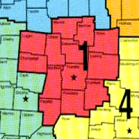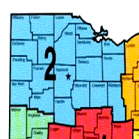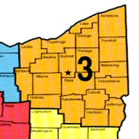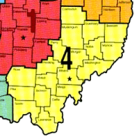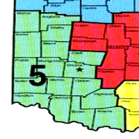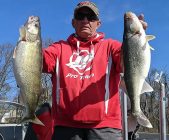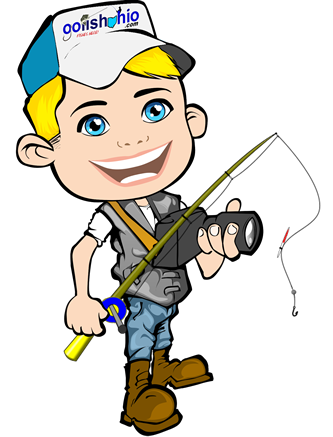The Summer Dog Days: More Myth Than Truth
Jim Porter (jporter@palmnet.net)
We’ve had a long spell of hot, dry weather in Ohio this Summer and it is continuing into the Fall. Here is an article offering some hot weather fishing tips that may help you fish more successfully through the “Dog Days” of high heat and still water…
With the hot, muggy days of Summer, we usually see marked decrease in fishing activity. There are few anglers on the waters and those who do venture out enjoy rather short days, mainly confined to the cooler periods of early morning/late afternoon. With this natural avoidance of creature discomforts has come the misconception that fishing successes are  somewhere between `poor’ and `impossible’ during the Summer months. Possibly, the relationship of hot weather to poor fishing is simply a well-planned excuse to stay indoors under the air conditioner, while watching the `Boys of Summer’ turn those double plays and hit their home-runs. Whatever the case, it is time to dispel the myths of the supposed `dog-days of Summer’.
somewhere between `poor’ and `impossible’ during the Summer months. Possibly, the relationship of hot weather to poor fishing is simply a well-planned excuse to stay indoors under the air conditioner, while watching the `Boys of Summer’ turn those double plays and hit their home-runs. Whatever the case, it is time to dispel the myths of the supposed `dog-days of Summer’.
Myth #1: Bass stop feeding in hot weather
This is the most common misunderstanding concerning fish behavior, and it may also be the easiest to logically explain away. Bass, being a fish, are cold-blooded creatures of nature. As such, they tend to adjust their body temperatures to that of their surroundings. Their bodies have certain upper and lower temperature ranges, within which life can be sustained. Temperature has one major effect on the bass and that is that it regulates the speed of his bodily processes (i.e., metabolic rate). For example, the rate at which energy is expended in a bass as with the temperature of his surroundings (and, therefore, his body) increase, thus requiring more and more food to digest and convert to that energy. This single fact shows that it is a physical impossibility for a fish to cease to feed during hot weather. In fact, a bass should feed more during the Summer months than at any other time.
Myth #2: In hot weather, bass always go to deep water.
While this statement may seem logical at first, it is actually a double falsehood. First, understand that `deep’ is a relative term. On exceptionally clear bodies of water, bass will always position themselves at greater depths than in a stained water impoundment.
Clear water bass may normally spend their time at depths of 20-45 feet. Therefore, `deep’ water would be somewhere below those depths. The majority of largemouth bass on a typical southern or mid-western reservoir might tend to spend their days and nights at a depth range of 10-18 feet, with occasional excursions to the shallow cover areas and food shelves to feed. Bass do not normally go deeper than this during the Summer months.
And, 10-18 feet is not normally considered to be `deep’ water. The fact is, the deepest the majority of bass will ever be found is during the coldest part of the Winter, when the depths are actually warmer than the mid-range and shallow zones!!
What `tricks’ us fishermen into thinking that the bass have gone exceptionally deep is actually a result of the recent seasonal change. To get into Summer, the bass had to pass through the Spring season. Spring, with its ritual of the spawn, had most of the bass clan up in exceptionally shallow water, where they were easy to find and catch. When they suddenly disappeared from the shallow cover, we unwittingly use the excuse that they must have fled to the deep zones. Actually, most of the Summer bass can be found beneath where your boat was sitting during the Spring fishing.
Second, escaping from the heat is no problem for a bass and really doesn’t enter into a Summer fishing scenario. Studies (please refer to the accompanying chart) have shown that when the surface temperature of a lake is in the high 80’s and low 90’s, the water at the 10-12 foot level will be in the low 70’s. You can easily prove this to yourself by jumping off a boat dock and noticing how cold that water is down deep. No more needs to be said about that misunderstanding.
Myth #3. Bass have certain temperature preferences and will always adhere to them.
Other than a specific temperature range to provide for incubation and hatch of the spawn, a bass usually seems to disregard temperature factors in favor of staying near a food supply. In fact, certain scientific study reports in my possession indicate that the largemouth bass makes the most efficient use of his food at a temperature range of 78-85 degrees (F). This efficiency factor is based on the percentage of digested food left over for body growth after fulfilling the basic requirements to sustain life.
In fact, the peak efficiency point was noted to be approximately 82 degrees (F). What this tends to indicate is that bass should be quite comfortable in what we anglers tend to describe as `warm’ water. And, in referring to the earlier chart, we could surmise that he can easily tolerate shallow zones during the Summer period.
What actually may be the case, regarding the Summer depth of a bass, is that the food supply (normally threadfin shad and crayfish) does not handle warm water well, and prefers the cooler depths. Accordingly, the bass follows the food source as the waters warm and it moves away from the shallow zones.
One great truism of bass angling notes that “Catching fish is easy; finding them is the hard part.” The
wisdom of this statement holds regardless of the season, the waters fished, the angler, and all the fine equipment in the World. However, it holds more significance for understanding as we try to overcome the ingrained misconceptions we have harbored for years regarding hot weather fishing.

So…Where Are The Bass In Hot Water?
Finding bass in the Summer is, like other times of year, a matter of understanding the world of the bass and how he reacts to his surroundings. With the water temperature up and their body metabolism high, the bass are very active, moving a lot, and feeding heavily. You may come upon a good structure feature, cast a lure, and catch two or three fish quickly. But, just as suddenly, it will be all over. And, the next time you try the location, it may well be void of any fish. Well, here is what is probably happening.
Summer bass school strongly and nearly always relate to structure. (The only exception may be when the bait fish schools move into open water over the deeper zones and the bass follow. We usually note this condition by the presence of surface feeding activity). The Summer school will be active and somewhat loose and dispersed, as all are trying to feed on a nearly-continual basis. The structure being used, therefore, must be fairly large in order to support the dispersion of the entire group.
This is a very key point in locating schools of hot weather bass on a consistent basis. We can still find singles and small groups on smaller structures and cover features. But, for lots of bass, we normally need large structure. The angler must recognize that, if a few bass are taken and the action stops, the remainder of the school may be dispersed across or along the remainder of the structure.
Key Locations:
The most ideal Summer structure is a creek or river channel drop, as it meets three primary requirements. First, it is near deep water, always a major factor in bass positioning. Second, it is a large feature that allows a school to disperse along its course. And, finally, channels normally have some degree of current flow, either natural or induced by the winds. Current is important in hot weather bassin’, in that it prevents stratification by temperature and oxygen levels, lends some cooling effect, and adds oxygen to the water.
Other good locations are large submerged islands, long underwater points, and roadbeds. Again, we would be searching for a feature near deep water and with sufficient size to support a large, widely dispersed school of actively feeding bass. Those readers who have fished tidal waters or flowing rivers with some degree of regularity readily recognize the benefits of current flow. The mixing of the continually moving waters precludes temperature stratification to the degree that there is little seasonal depth variance in the location of bass.
On shallow, weed-infested waters, some Summer bass will relate to structure, if the water happens to be deep enough. However, the dense aquatic growth may indicate where the majority will be. (Florida biologists report that fish sampling has shown about two-thirds of the bass will be in the dense cover zones and the remaining one-third in open water. This can be considered a normal condition, IF the aquatic growth is alive and thriving. Dead vegetation actually uses up oxygen as a part of the decay process.)
The heavy cover, even in the shallows, is comfortable due to the shade and the rich oxygen output of the plant life. A by-product of the photosynthesis of oxygen is a cooling effect, which may well make the shallow vegetation zones cooler than deeper, open water. When searching for bass in these shallow waters, the two key ingredients are, by priority: the most dense cover and the deepest water available.
Other Considerations…
Recalling that the warm waters result in a high metabolic rate in the bass and an increased requirement for food, we would suspect that the competition for food would be high during the Summer months. Consequently, we would logically choose an active lure to attract the active fish. This basically describes a diving, lipped crank plug pulled with a fast retrieve. In fact, this type lure has proven to be the most effective method for taking large quantities of largemouth bass during the heat of mid-Summer. The only requirement is that the angler get in down to the fish.
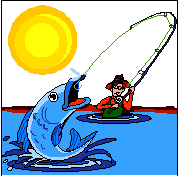 Selecting the lure with the express purpose of operating it at a certain depth, as dictated by the structure to be fished, is the most important criteria for the angler’s decision process. If the depth to be fished is beyond that at which a crank plug can be accurately presented and controlled, a plastic worm is acceptable, but should be fished rapidly and erratically. Remember, during hot weather, a rapidly-fished lure is always vastly more productive than one presented slowly. Plus, we will be able to make more casts during the day. Every cast is a potential ten-pounder!
Selecting the lure with the express purpose of operating it at a certain depth, as dictated by the structure to be fished, is the most important criteria for the angler’s decision process. If the depth to be fished is beyond that at which a crank plug can be accurately presented and controlled, a plastic worm is acceptable, but should be fished rapidly and erratically. Remember, during hot weather, a rapidly-fished lure is always vastly more productive than one presented slowly. Plus, we will be able to make more casts during the day. Every cast is a potential ten-pounder!
So, just because the weather is a bit uncomfortable, don’t stay home under the air conditioner and sulk. The bass are on their most active feed during the hot Summer period.
Go feed them.

